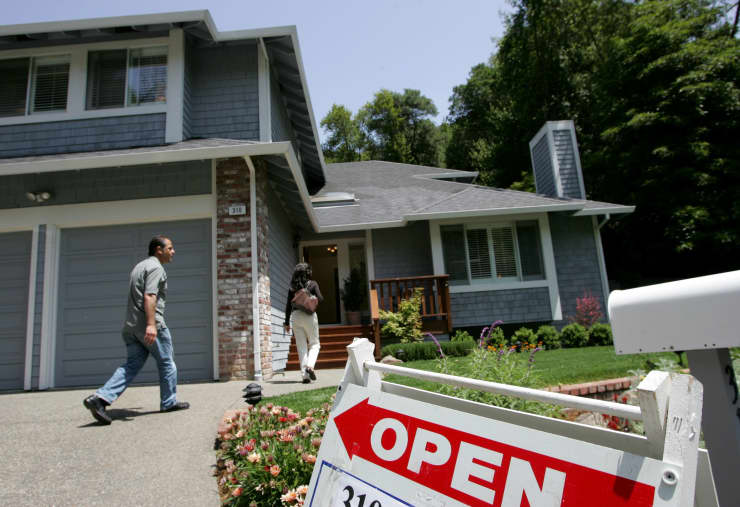
Real estate agents arrive at a brokers tour showing a house for sale in San Rafael, California.Getty Images
National home prices rose 3.7% annually in March, down from 3.9% in February, according to the S&P CoreLogic Case-Shiller home price index.
Prices had been seeing double-digit annual gains, but they are gone. The largest annual gain was 8.2% in Las Vegas; one year ago, Seattle had a 13% gain a year ago but has dropped dramatically to just 1.6%. The 20-City Composite dropped from 6.7% to 2.7% annual gains over the last year.
“Given the broader economic picture, housing should be doing better,” David Blitzer, managing director and Chairman of the Index Committee at S&P Dow Jones Indices, wrote in the report. He noted that mortgage rates and unemployment were low, along with low inflation and moderate increases in real incomes.
“Measures of household debt service do not reveal any problems and consumer sentiment surveys are upbeat. The difficulty facing housing may be too-high price increases,” he added.
The 10-City Composite rose 2.3% annually, down from 2.5% in the previous month. The 20-City Composite gained 2.7%, down from 3.0% in the previous month.
Even with today’s smaller gains, prices are still rising almost twice as fast as inflation. In the last 12 months, the S&P Corelogic Case-Shiller National Index is up 3.7%, double the 1.9% inflation rate.
Prices are still higher annually in all of the 20 major cities measured by the indices, but some are getting very close to negative territory. Prices in Los Angeles, Seattle, Chicago, San Diego and San Francisco are just over 1% higher than March 2018.
Las Vegas, Tampa and Phoenix are seeing the biggest gains. These were the markets hit hardest during the housing crash and therefore still have the farthest to go to fully recover.
Other housing indicators are also weaker than expected this year. Existing home sales have been relatively flat all spring, despite falling mortgage rates.
read more…
